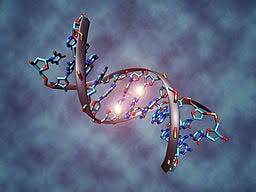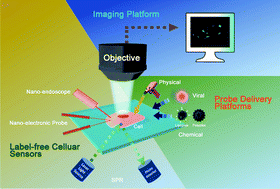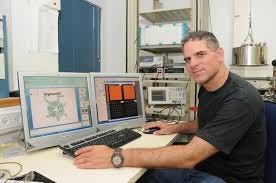Bionanotechnology, the revolution in science. Part II
We continue to discover the wonderful world of NanoBiotechnology.
In this post we will continue to discover different aspects of Nanobiotechnology and I will present some of the researchers that I have had the opportunity to meet in recent years. Remember, as we move forward, we will move on to other fields of nanotechnology.
In this second post I will continue to show you some of their most important fields of research. At the end of the post I will present Dr. Danny Porath who works at The Hebrew University of Jerusalem, Israel.
Nanotechnology-Based Cytogenetics
Cytogenetics has been used mainly to describe the chromosome structure and identify abnormalities related to disease. The localization of specific gene probes by fluorescent in situ hybridization (FISH)1 combined with conventional fluorescence microscopy has reached its limit. Molecular cytogenetics in now enhanced by use of nanobiotechnology, e.g., atomic force microscopy and quantum dot (QD) FISH.
Both atomic force microscopy and scanning near-field optical microscopy have been used to obtain local information from G-bands and chromosomal probes. The final resolution allows a more precise localization compared with standard techniques, and the extraction of very small amounts of chromosomal DNA by the scanning probe is possible. This method is also focused on the combination of biochemical and nanomanipulation techniques, which enable both nanodissection and nanoextraction of chromosomal DNA.
The photostability and narrow emission spectra of nonorganic QD fluorophores make them desirable candidates for the use of FISH to study the expression of specific mRNA transcripts. A method for direct QD labeling of modified oligonucleotide probes using streptavidin and biotin interactions increased sensitivity of multiple-label FISH (8). This technique also gives excellent histological results for FISH combined with immunohistochemistry.
Courtesy: Darren K Griffin (University of Kent, UK)
Nanoscale Single-Cell or Molecule Identification
Nanotechnology has facilitated the development of methods for detection of single cells or a few molecules. Nanolaser scanning confocal spectroscopy, with the capability of single-cell resolution, can be used to identify previously unknown properties of certain cancer cells that distinguishes them from closely related nonpathogenic cells. Nanoproteomics, the application of nanobiotechnology to proteomics, can enable detection of a single molecule of protein. Biobarcode assays enable detection in body fluids of miniscule amounts of proteins that cannot be detected by conventional methods . A 2-dimensional method for mass spectrometry in solution is based on the interaction between a nanometer-scale pore and analytes . An applied electric current is used to force charged molecules (such as single-stranded DNA) one at a time into the nanopore, which is only 1.5 nm at its smallest point. As the molecules pass through the channel, the current flow is reduced in proportion to the size of each individual chain, allowing its mass to be easily derived. This single-molecule analysis technique could prove useful for the real-time characterization of biomarkers.
Courtesy: Ly James Lee, (The Ohio State University,USA)
Nanoparticles for Molecular Diagnostics
Several nanoparticles have been used for diagnostics. Of these, the most frequently used are gold nanoparticles, QDs, and magnetic nanoparticles.
Gold Nanoparticles for Diagnostics
Small pieces of DNA can be attached to gold particles no larger than 13 nm in diameter. The gold nanoparticles assemble onto a sensor surface only in the presence of a complementary target. If a patterned sensor surface of multiple DNA strands is used, the technique can detect millions of different DNA sequences simultaneously.
The current nonoptimized detection limit of this method is 20 fmol/L. Gold nanoparticles are particularly good labels for sensors because a variety of analytical techniques can be used to detect them.
Within Biotechnology I have had the opportunity to meet many important researchers over 18 years organizing Nanotechnology events. I would like to introduce you to one of them that I have chosen for his research work. His name is Dr. Danny Porath and he works at The Hebrew University, Israel. Here is a short biography and an abstract of his last talk in one of our conferences. I also leave you an interviewt his research. In the video we will see Profs. Danny Porath and Oded Shoseyov of the Harvey M Krueger Family Center for Nanoscience and Nanotechnology discuss groundbreaking developments in the fields of nanoscience and biology.
Bio: Prof. Danny Porath Studied for BSc in Physics, Mathematics and Electronics at the Hebrew University. Received his Ph.D in Physics from the Hebrew University in 1997. Did his postdoc at Delft University of Technology with Prof. Cees Dekker and established his group at the Institute of Chemistry of The Hebrew University of Jerusalem in 2001. The group research interests include: DNA-Based Nanoelectronics, scanning probe microscopy and spectroscopy of single molecules, electrical transport measurements in single molecules, nanoelectronics, DNA sequencing and biomarker detection. Member of the Editorial Board of “Self Assembly and Molecular Electronics and of “Scientific Report” from Nature Publishing Group. Received excellent postdoctoral award of the American Vacuum Society Meeting, Boston 2000, and The Israel Chemical Society Prize for the Outstanding Young Scientist in 2007. Holds the Etta and Paul Schankerman Chair of Molecular Biomedicine since 2014. Served as the Director of the Hebrew University Center for Nanoscience and Nanotechnology 2011-2014. Currently serves and the Vice Dean Research of the Faculty of Science.
Abstract: Charge transport through molecular structures is interesting both scientifically and technologically.To date, DNA is the only type of polymer that transports significant currents over distances of more than a few nanometers in individual molecules. Nevertheless, and in spite of large efforts to elucidate the charge transport mechanism through DNA a satisfying characterization and mechanistic description has not been provided yet. For molecular electronics, DNA derivatives are by far more promising than native DNA due to their improved charge-transport properties.
In recent years we have invested great efforts to address the above issues. Measuring the charge transport in DNA was elusive due to great technical difficulties leading to various results. We recently devised an experiment in which double-stranded DNA is well positioned between metal electrodes. Electrical measurements give surprisingly high currents over 100 base-pairs (~30 nm) elevated from the surface. The temperature dependence indicates backbone-related band-like transport.
In collaboration with the Kotlyar group, we were also able to synthesize and measure long (hundreds of nanometers) DNA–based derivatives that transport significant currents when deposited on hard substrates. Among the molecules, metal containing DNA, which is true metal-organic hybrid, a smooth and thin metal coated DNA and G-quadruplex DNA.
Step by step we improve the synthesized constructs and the measurement methods of single DNAbased molecules. I will present new and surprising results on dsDNA molecules. I will present new DNA-based molecules and report on our measurements of their properties
My Israeli nanobiotechnology colleagues: from left to right: Avi Schroeder (Technion, Israel); Danny Porath (The Hebrew University of Jerusalem, Israel); Myself ; Ofra Benny (The Hebrew University of Jerusalem, Israel). They are wonderful people and I hope to meet them again in person.
The nanometer – 10 to the -9th meter- is a miniscule unit representing the world of nanoscience and nanotechnology, a field which is sometimes unknown but which has visible effects. With the aim of discovering what happens in the nanoworld and see what is being done in the fields of research and technology at a small scale, from April , the sixth edition of the Nanoscience and Nanotechnology Fest ival 10alamenos9 (www.10alamenos9.es) will take place.
The new edition of the festival, coordinated by the University of Barcelona, has more than a hundred activities, doubling the number of activities from last year’s edition. Fifty entities are taking part in the organization –universities and research institutes-, lots of them being reference entities in Iberoamerica in the field of nanotechnology.
The event is sponsored by BASF. Every year many (8) Iberoamerican countries organizes an outreach Festival with many activities, for example, this contest (https://icmab.es/concurs-de-nanorelats-organized-within-the-10alamenos9-festival). This event will take place in nine cities in Spain and other countries from April to May with activities aimed at the general public and schools, and it will have more than 5,000 participants.
The aim is to bring nanoscience and nanotechnology closer to people in a dynamic, fun and rigorous way and show people that nanotechnology is a reality, which is not seen but it is all over.
In Barcelona, there will be activities aimed at primary and secondary education schools –through the Nanoinventum/NAnoEduca project- apart from exhibitions, some with nanotechnology products and augmented reality, and seminars carried out by distinguished researchers, as well as workshops that are related to the several fields of nanoscience.
The Festival reaches its sixth edition from 2015. We made also some online activities possible such as the "Vermut de nanociència" with the main objective of bringing nanotechnologies to everybody in an understanding way and broadcasting it in streaming to make easier the participation and the debate. The talks started on April and ended on May. Last year we made 33 videos.
We are in touch
https://icn2.cat/en/outreach/education-program/10alamenos9
https://icmab.es/more-than-200-students-at-the-10alamenos9-nanoscience-and-nanotechnology-festival-at-uab-campus
For 18 years I have been and still am the contact person for the Spanish Nanotechnology Network (Nanospain) and this has encouraged me to start writing in this newsletter. I have had the opportunity to meet first hand Spanish and foreign researchers whose research revolves around Nanotechnology.
I hope you enjoy it. I will try to publish one post per week.
(Remember that this newsletter is more or less weekly, but not always free. If you don't want to miss an issue or any of the special essays, all of which are paid for, you can become a monthly or annual subscriber: click below on "become a paying subscriber" and choose the plan you prefer).











